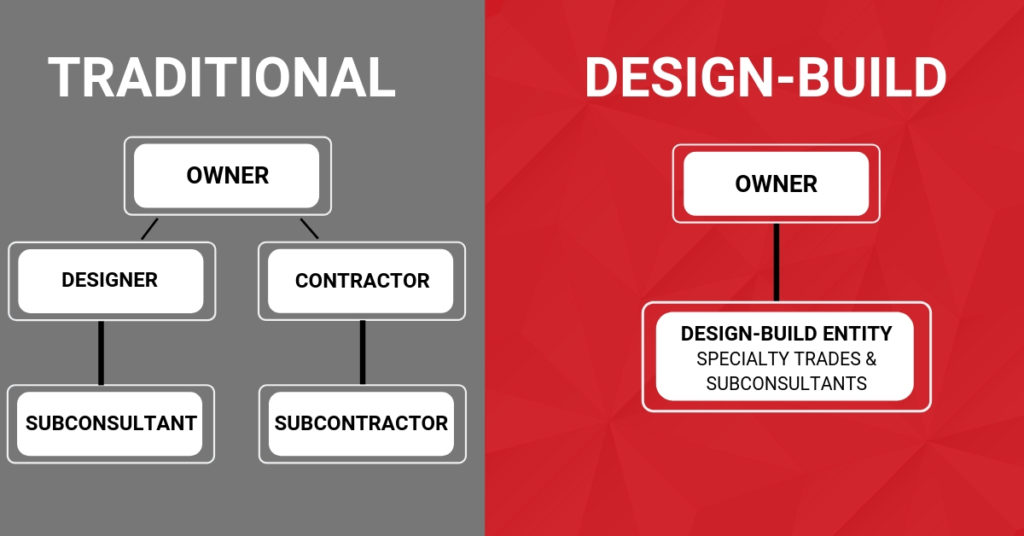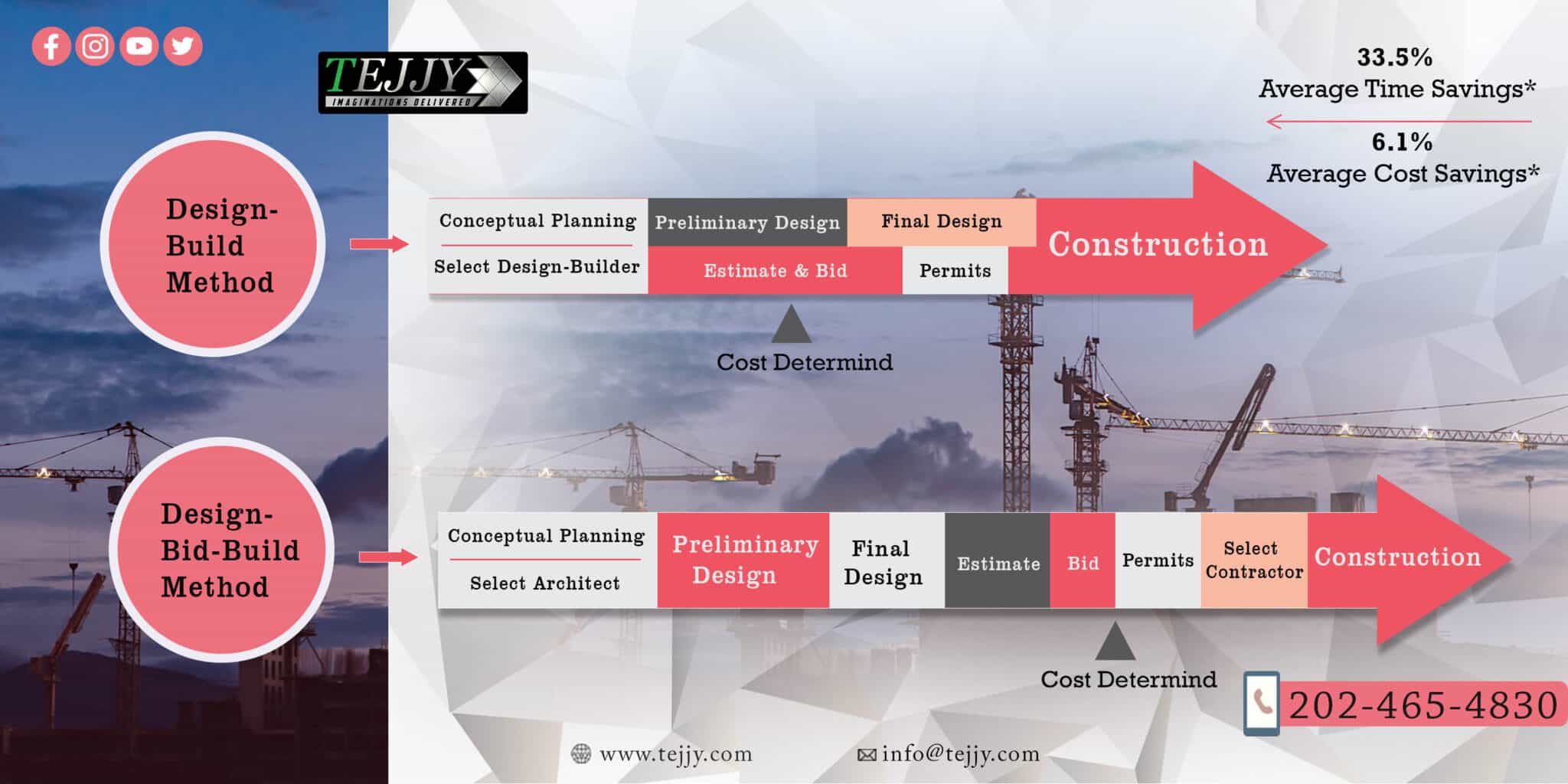Design-Bid-Build Explained: Process, Pros and Cons
Table Of Content
- How to Bid a Construction Job: A Comprehensive…
- Ensure Quality Work with a Construction Punch List…
- Design-Bid-Build Construction Explained
- Successfully Navigating Construction Lien Waivers
- Contract details to include
- Potential Risks with Design-Bid-Build
- Speak with Local Construction Experts Today
- More Opportunities for Fair Bidding

The design phase includes completing engineering and design necessary to the point where procurement of the construction contractor can commence, and so that bottom-up cost estimates can be completed. In the design phase, designers and design builders need quality utility data to make sure that the design matches conditions in the field—and to avoid potential delays and costly redesigns. The design-build method opens the door for significant collaboration between the various stakeholders on a construction project.
How to Bid a Construction Job: A Comprehensive…
Construction cannot begin prior to the design of the project being finalized and signed off, so timelines can be delayed. It’s also a good fit for projects that are required to procure professional design services by qualifications-based selection (QBS) regulations and constructors by competitive bidding. During the construction phase, the design-builder performs the construction.
Ensure Quality Work with a Construction Punch List…
This contract binds the contractor to design and construct the project according to the owner’s instructions and specifications. The most prominent difference between design-build and design-bid-build processes is the level of interaction between contractors and designers. Contractors on design-build are involved in the process from the outset and can consult or suggest changes to project designs very early in the process. Design-bid-build, according to Perlberg, is the most used — hence why it’s often referred to as the traditional project delivery method. That’s because of its time-tested process that has been used almost as long as construction has been an industry. The design-bid-build delivery method is best suited for less complicated, predictable projects with a strict budget and a flexible completion schedule.
Design-Bid-Build Construction Explained
Just In Time (JIT) delivery is a foundational method of construction site logistics and inventory management. JIT involves scheduling and procuring materials to be delivered on site as close to... The downside to role separation is the lack of contractor influence over designs.
It’s best to involve the design and construction firm during the design so both parties agree. As mentioned design-build offers faster project delivery due to its streamlined process. With the building team involved, change orders are minimized, and the construction phase can begin earlier. Using the design-build method, the project manager and team members could identify and solve potential design issues during the design phase, avoiding costly change orders later. The fundamental difference lies in how these two project delivery methods are structured. Design-build is a method where the design and construction services are contracted by a single entity, known as the design-build contractor.
Contract details to include
Some large infrastructure projects projected to take over two decades using the design-bid-build method were completed within just five years using design-build. Such a massive difference in length could make or break a project's feasibility. Throughout construction, the general contractor owns the building process, and completes a change order for any part of the plan that won't work or needs alteration. The contractor submits the required changes along with a quote for the additional costs that will result, and the owner signs off on the changes.
Potential Risks with Design-Bid-Build
This keeps the owner from having to oversee multiple contractors throughout the process; the design-builder is solely responsible for getting the work done on time and on budget. The cost for design bid build work can be lower due to the competitive bidding for the construction contract. The reason is that the project owner has individual contracts with the design team and the general contractors, reducing risk. In Design-Bid-Build projects, getting a clear understanding of utility risk as early in the project as possible —and well before procurement—is crucial. Since the project owner chooses the designer and the construction contractor separately, much of the ultimate responsibility (and risk) for utility strategy can fall back to them. In a typical Design Build contract, a design builder is involved in the process from a much earlier stage.
Speak with Local Construction Experts Today
It is often used for large, public projects and is often the delivery method required by public and municipal entities. Because of the breadth of the design-build contract, much of the risk involved in a project using the design-build method falls away from the owner to the design-build contractor. As a result, owners are often better protected against unexpected costs resulting from design errors or construction delays. Each delivery method offers advantages and disadvantages, and the choice among them will be impacted by the owner's wish for involvement, appetite for risk, and skill and experience in building projects. Still, the design-build method offers many selling points for construction owners.
Study Finds Design-Builder Profit Shortfall on Big Infrastructure Projects - Engineering News-Record
Study Finds Design-Builder Profit Shortfall on Big Infrastructure Projects.
Posted: Tue, 24 Aug 2021 07:00:00 GMT [source]
More Opportunities for Fair Bidding
The construction phase is when the actual project is underway and all of the appropriate subcontractors are busy working on their particular tasks. The general contractor works as a go-between for subcontractors and owners, ensuring projects are on track and in budget every step of the way. They are in charge of resolving any issues that arise and keeping the project owner up to date with progress reports, pictures, etc. The purpose of the design-bid process is to reduce risks to the owner of the property by assigning all responsibilities to one single entity.

Not having a contractor involved in the design phase eliminates the opportunity to get their advice and input on constructability issues at a time when the design the can be affected most. Also, cost and scheduling estimates provided by the design team may not be based on true current market conditions, even as good contractors have hard data about these conditions on-hand. By the time alternative materials or methods are chosen, it may be too late to implement or make changes to realize any meaningful cost savings. Likewise, without the knowledge gained throughout the design phase, construction teams won’t know the project as well and may be blindsided by problems on the jobsite, causing further delays and cost increases.
It’s a more segmented approach where design and build are handled by separate entities. One of the most beneficial aspects of design-build delivery is its ability to compress a construction schedule. Because the design and build teams are contracted together, the contracting team doesn't have to wait for design completion to get started on building. Construction can begin on earlier project phases before the final design is complete. Owners who choose the design-build delivery method enter into a contract with a single firm, which takes on both the architecture and engineering (design) process and the construction of the final product. Design-build is a project delivery system where an entity (a construction company) handles the entire design and construction process.
Rep. Cambensy’s Design-Build Bill for Michigan Public Schools passes Michigan House - WJMN - UPMatters.com
Rep. Cambensy’s Design-Build Bill for Michigan Public Schools passes Michigan House.
Posted: Thu, 12 May 2022 07:00:00 GMT [source]
As newer project delivery methods grow in popularity, they will continue to present new opportunities, and new challenges, for successful utility coordination. In this post, we’ll take a deep dive into the two most common project delivery methods— Design Bid Build (DBB) and Design Build— and look at their relationship with utilities and utility strategy. The defining characteristic of the Design-Build project delivery method is the early collaboration between design team and general contractor. This method enables owners to select both the design team and construction team at a very early stage of planning, typically before designs reach 25 percent completion. Once teams are selected, they work together to design, review, estimate and schedule the project.
First, the owner contracts the architecture and design process to one firm, then enters a second contract with a general contractor to complete construction on the project. In the construction industry, every project, big or small, has a lot of moving pieces, literally, figuratively and financially. For the successful execution of every project, the funding, procurement, timing, planning, risk exposure and actual construction depend on the delivery method. Making the wrong choice can waste time, money and other valuable resources. Two of the most widely used project delivery methods are Design-Bid-Build (DBB) and Design-Build (DB). The project owner contracts the design firm first, then a general contractor through a competitive bidding process.
This approach integrates the design and construction phases, allowing for faster project delivery and potential cost savings. The design-build team works collaboratively, promoting efficient communication and streamlined decision-making. Design-bid-build (DBB) is a traditional construction project delivery method that involves the completion of three distinct phases in sequence.
In design-bid-build, the owner or agency in charge oversees both the design and the construction. The architect and contractor have no agreement in this system and both answer to the owner. Design-bid-build allows for a construction management structure where a general contractor oversees the project in a managerial role.
Both Design-Bid-Build and Design-Build projects offer opportunities for utility coordination from the outset–reducing the risk of project delays and costly utility strikes. Every construction project comes with unique risks, and assessing and mitigating subcontractor risks is necessary for general contractors (GCs) to maintain profitability and smooth operations. Cost savings are only possible for design-builders when the team has managed an accurate bid, which can be very difficult without the benefit of a complete design.
Comments
Post a Comment